VALIDATION SCIENTIFIQUE
Laure Fourchaud – 24.11.2021
Dr en physiologie de la nutrition
BENEFITS OF CHIA SEEDS
✓ The best source of fiber
✓ An omega-3 shot
✓ Source of antioxidants
✓ Source of protein
✓ Help with weight loss
What are chia seeds?
Chia seeds (Salvia hispanica) come from a sage of the Lamiaceae family, which also includes mint, lavender, and rosemary. Oval and tiny – they measure about 2 mm – they are obtained from the dried flowers harvested from the plant in autumn. Their color ranges from brown to beige, their appearance is mottled.
They were originally cultivated in Mexico from 2000 BC. They are now found in the tropical and subtropical areas of Central America, South America, and Australia.
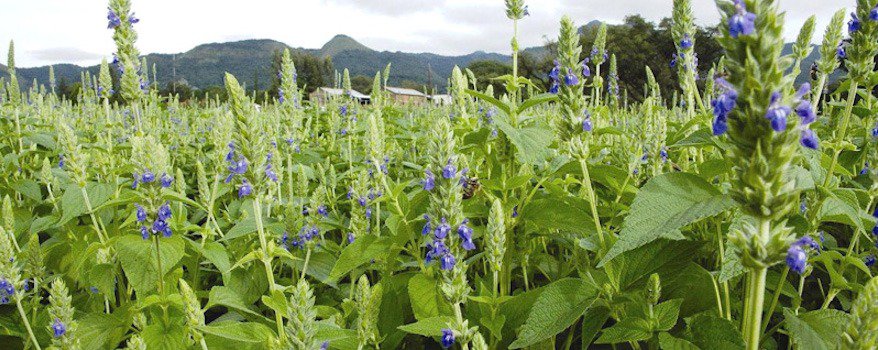
Their cultivation developed under the pre-Columbian civilizations of Mesoamerica — the Toltecs, the Maya, and then the Aztecs. They were used for food and therapeutic purposes for their high nutritional value. It was one of the main foods consumed along with corn and beans. Roasted and/or ground, they formed the basic ingredient of pinoles, small energizing cakes, and beverages. The name “chia” actually comes from Nahuatl, the Aztec language, and means “oily”.
The production and consumption of chia seeds gradually declined following the Spanish conquest, and they eventually fell into oblivion. So why did they make a comeback to the forefront of the superfoods scene 5 centuries later?
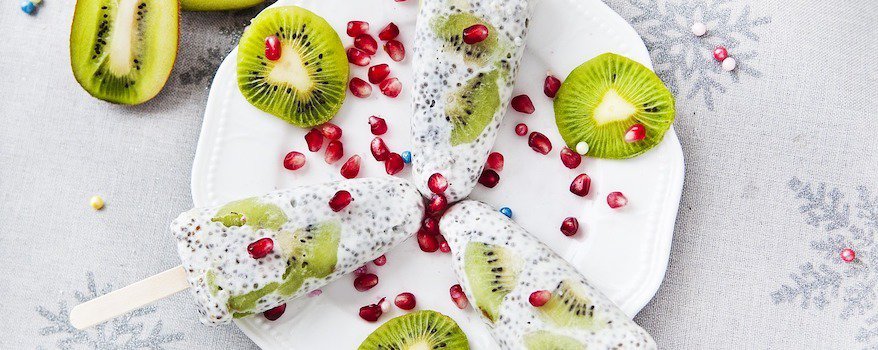
In the late 1990s, the American company Core Naturals LLC discovered the exceptional properties of chia seeds and, after multiple crossings, isolated the most nutritious and omega-3-rich seeds, the white-colored ones. It patented them under the name Salba and intensively developed their cultivation in Peru. Since then, nutritionists have studied this remarkable food, and it has become a star of healthy food.
Today, they are particularly prized for their many benefits and ease of consumption. Not very flavorful, they mix into all kinds of recipes, even though some are specifically dedicated to them, such as the famous chia pudding.
They are really interesting from a nutritional point of view because they are richly supplied with antioxidants, minerals, vitamins and omega-3s, and low in calories. But, like psyllium, it is above all their high fiber content that sets them apart.
Indeed, chia seeds are made up of up to 40% fiber, and are thus one of the best sources of fiber in the world!
Nutritional composition
- Fatty acids : omega-3 (alpha-linolenic acid) and omega-6
- Proteins : 9 essential amino acids (including tryptophan)
- Polyphenols : chlorogenic acids, caffeic acid, flavonols
- Minerals and trace elements : calcium, phosphorus, iron, magnesium, manganese, potassium, zinc, copper
- Vitamins : B1, B2, B3, B9, B12

Buy organic chia seeds: my selection
I recommend the organic chia seeds from the French brand amoseeds.
We recommend (and consume!) amoseeds’ superfoods because their founders source directly from local organic cooperatives.
They therefore offer very high-quality products, at lower prices.
Don’t forget to use the promo code “DARWIN” when placing your order to get 5% off all their products (and up to 25% when buying the same product multiple times).
Also read the Where to buy quality chia seeds?
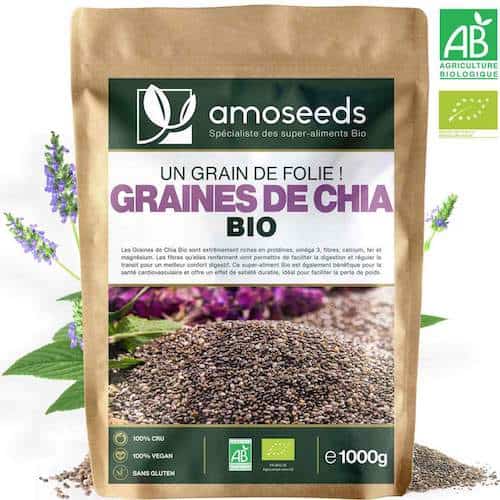
❤ I like : The very good value for money, the quality of the seeds and the very positive reviews from the brand’s customers.
★ Customer reviews : 4.9/5
☞ Quantity : 1 kg / 100 servings
✔ Discount code -5% : DARWIN
Benefits of chia seeds
♻️ The best source of fiber
The majority of the carbohydrates present in chia seeds are fiber; they can contain up to 35 g per 100 g. They are one of the best sources of dietary fiber.
They are not digested and therefore not absorbed by the body, but they are indispensable to our digestive system, and they also play a role in our metabolism and the proper functioning of our immunity, our brain, our liver…
The fibers of chia seeds are soluble; they absorb up to 10 times their weight in water and form a gel in the stomach. They speed up the feeling of fullness, act as prebiotics and thus facilitate transit..
They nourish the gut microbiota (formerly “intestinal flora”) and keep it healthy, which has a beneficial impact on digestion, prevents constipation and improves our overall health.
They also facilitate the absorption by our body of minerals such as calcium.
This study from the Department of Chemical Engineering at the University of Yucatan in Mexico highlights the beneficial properties of chia seed fibers.
🐟 An omega-3 shot
Chia seeds have a high concentration of omega-3, particularly alpha-linolenic fatty acids (ALA), a type of plant-based omega-3.
ALA omega-3s are essential because, not synthesized by our body, they must be provided by our diet. Their properties are beneficial in more than one way, as they help regulate blood pressure, anti-inflammatory responses, and the elasticity of blood vessels…
However, the consumption of these seeds should be complemented by fatty fish (mackerel, sardines, salmon…) to diversify the types of omega-3.
This study from the North Carolina Research Campus in the United States showed that ground chia seeds significantly increased blood ALA levels.
🥝 Source of antioxidants
Chia seeds have an excellent antioxidant activity. They are a source of polyphenols including chlorogenic acid, caffeic acid and flavonols. These antioxidants act within the seeds themselves to protect their fatty acids from oxidation.
Once in our body, they help our cells fight the formation of free radicals and therefore cellular aging.
This study from the Center for Research and Advanced Studies of the National Polytechnic Institute of Irapuato in Mexico demonstrated the high antioxidant activity of chia seeds and their nutritional benefits.
🥩 Source of protein
Chia seeds contain about 14% protein, 9 essential amino acids including tryptophan, a precursor of serotonin (known as the happiness hormone). Such a high protein level is rarely found in plant-based products.
They are especially recommended for people following a vegetarian diet, because their good protein content helps to make up for certain deficiencies.
This study from the University of Querétaro in Mexico analyzed in detail the proteins present in chia seeds.
🏃🏼 Help with weight loss
Chia seeds are low in calories and can be a good aid for people trying to lose weight, for several reasons.
On the one hand, they are packed with fiber which expands with water in the stomach (as we’ve seen, they absorb up to 10 times their own weight). They thus form a sort of gel that increases the feeling of fullness and acts as an appetite suppressant.
On the other hand, their high protein content also provides a lasting feeling of fullness and greatly reduces the urge to snack between meals.
Also read the How can chia seeds be used to lose weight?
These two actions also help to regulate blood sugar, a virtue also attributed to goji berries, and prevent excessive insulin production.
This study from Hacettepe University Faculty of Medicine in Turkey shows that chia seeds combined with yogurt in the morning increase feelings of fullness and reduce snacking during the day.
🦴 Promote bone health
Chia seeds contribute to good bone health because they provide calcium, as well as other minerals such as phosphorus and magnesium.
30 g of these seeds provide 18% of the recommended daily intake of calcium.
Proportionally, they contain more calcium than milk and are therefore an excellent alternative for people who are lactose intolerant or who consume few dairy products. They help strengthen bones and may help prevent osteoporosis.

How to consume chia seeds?
Where to find chia seeds?
You can find them in the cereal aisle, both in supermarkets and in organic stores, health food shops, or specialized online retailers.
Chia seed recipe

Chia seeds are particularly easy to use! They can be eaten as is or ground and are ideal for starting the day.
No cooking needed, you can add two tablespoons to a yogurt or a porridge in the morning, sprinkle on a salad, a soup or a dish at lunch and dinner. Their neutral flavor really allows them to be incorporated into any type of recipe.
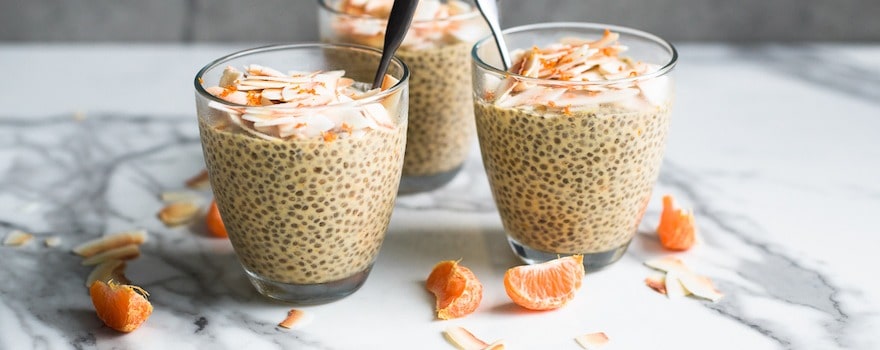
The chia seed recipe that is most popular is undoubtedly the chia pudding. Just mix three tablespoons of seeds with coconut milk and pieces of fruit (bananas, berries…) then pour them into a small jar. Leave in the fridge overnight and enjoy it the next morning for breakfast or as a snack, with a little honey.
You can of course prepare several in advance, and many variations are possible — for example with almond milk, or by adding a fruit sauce (coulis)!
Also, always make sure to stay well hydrated when consuming chia seeds, because they absorb liquids.
Consume sustainably: prioritize organic, fair-trade, and local chia seeds
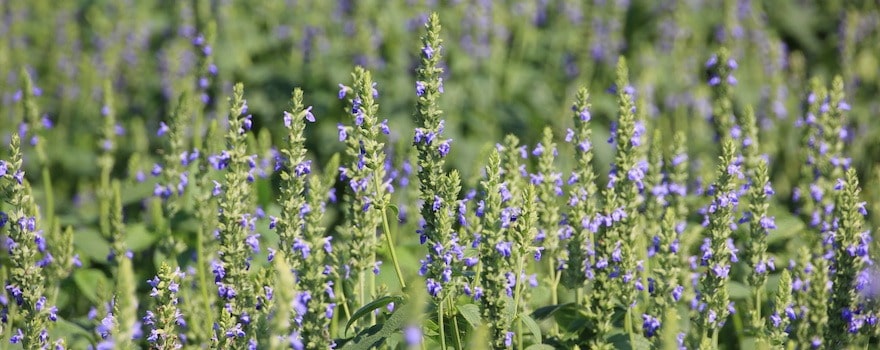
✓ As usual, we strongly recommend consuming organic chia seeds to avoid any pesticide treatments, ensure better product quality, and maximize their benefits. In fact, organic cultivation of chia seeds is widespread, so they are easy to find. Organic farming is also more respectful of the environment.
✓ If sourcing chia seeds from South America (Peru, Bolivia, Argentina…) or Central America, favor those from fair-trade supply chains to help ensure a fairer income for producers and growers in emerging countries.
✓ Since 2017, you can obtain chia seeds grown in France! The chia sector in France brings together 13 cooperatives in different French regions that produce a variety adapted to cultivation in a temperate climate. Consuming these will help reduce carbon emissions, ensure better product traceability, and support a local supply chain.
Dosage
The dosage of chia seeds varies depending on the intended use. The following dosages are recommended:
🥄 15 g per day (two to three level tablespoons) for regular use.
🥄 Up to 30 g per day for a 2-month course.
Contraindications and side effects
Chia seeds are safe and do not present major contraindications or side effects. However, because they are soluble fibers, consuming them in excess can cause flatulence or diarrhea.
They are potentially allergenic for people with seed allergies (sunflower, flax, sesame…).
Furthermore, they are contraindicated in cases of prostate cancer or risk of prostate cancer because of their high alpha-linolenic acid content.
History, cultivation, and market of chia seeds
Chia seeds were continuously cultivated in Mexico and the rest of Central America since pre-Columbian times, despite their decline following the Spanish conquest. Traces of cultivation are found in the Valley of Mexico in the 3rd millennium BCE. Later, the Toltec culture is also thought to have grown them in the region of the Teotihuacan site.
Among the Aztecs, they were part of the staple diet, along with corn and beans. They were also used to prepare beverages, treat infections, and make oils. From the 16th century, the conquistadors marginalized its cultivation, and its worldwide resurgence only took place from the 1990s onward.
Today, Peru, Argentina, Bolivia, Colombia, Ecuador, Paraguay, and Australia are also among the producing regions.
Europe imports about 20,000 tonnes of chia seeds per year (including 500 for France). Since 2017, French farmers have been producing certified organic chia seeds on French soil, thanks to a variety adapted to the temperate climate.
Sources and scientific studies
Vázquez-Ovando Alfredo, Rosado-Rubio Gabriel, Chel-Guerrero Luis, Betancur-Ancona David, 2008. Physicochemical properties of a fibrous fraction from chia (Salvia hispanica L.).
Nieman DC, Gillitt N, Jin F, Henson DA, Kennerly K, Shanely RA, Ore B, Su M, Schwartz S, 2012. Chia seed supplementation and disease risk factors in overweight women: a metabolomics investigation.
Martínez-Cruz, Paredes-López, 2014. Phytochemical profile and nutraceutical potential of chia seeds (Salvia hispanica L.) by ultra high performance liquid chromatography.
Ayaz A, Akyol A, Inan-Eroglu E, Kabasakal Cetin A, Samur G, Akbiyik F, 2017. Chia seed (Salvia Hispanica L.) added yogurt reduces short-term food intake and increases satiety: randomized controlled trial.



